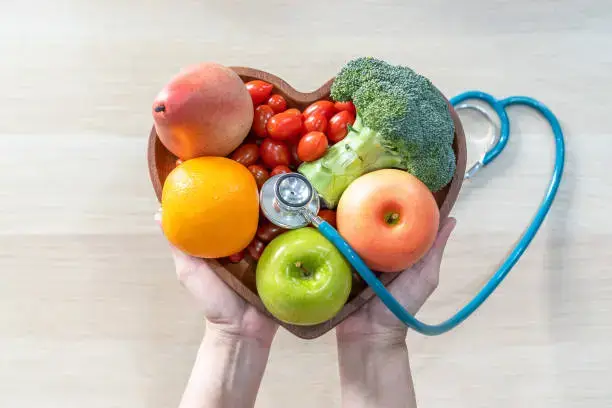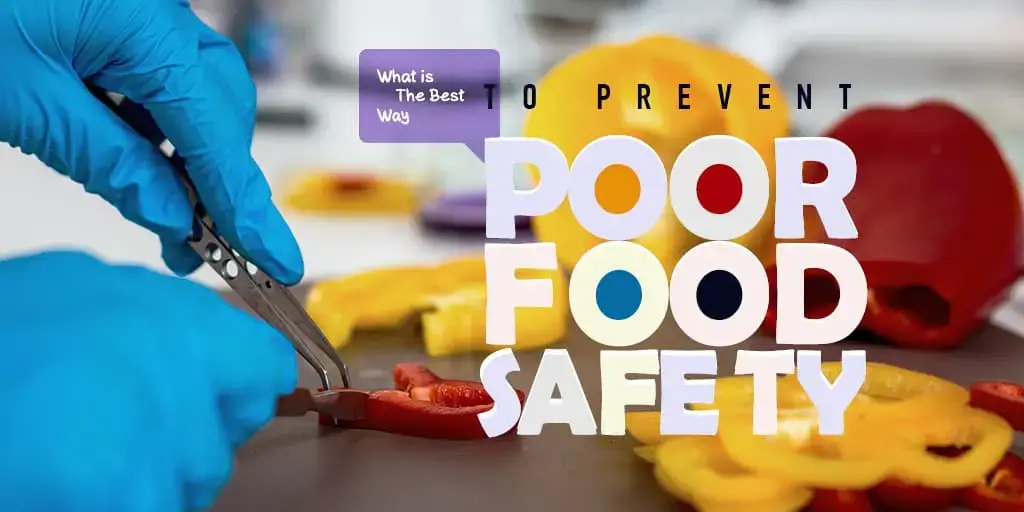10 Best Ways to Prevent Poor Food Safety

To prevent poor food safety, always wash your hands before handling food, and make sure to clean all fruits and vegetables thoroughly. Keep raw meats separate from ready-to-eat foods to avoid cross-contamination and cook foods to the right temperature using a food thermometer. Store leftovers promptly in the fridge and avoid leaving perishable items out for too long. We have explained other important processes which will help you to keep your food safe and prevent any chances of getting sick.
What is Poor Food Safety?

Poor food safety means not taking the right steps to keep your food clean and safe to eat. It happens when hands aren’t washed properly before handling food, when food isn’t cooked at the right temperature, or when leftovers are left out too long. It also occurs when raw meats mix with foods ready to eat or when things aren’t stored in the fridge correctly. Basically, anything that leads to germs spreading in your food or making it go bad is poor food safety.
1. Personal Hygiene
- Washing Hands: Make sure to wash your hands really well before and after touching food. Use soap, water and scrub for at least 20 seconds.
- Wearing Clean Clothes: Always wear clean clothes and aprons when you’re dealing with food. This helps to stop germs from spreading and making you or others sick.
- Being Careful When Sick: If you’re feeling unwell, especially with stomach problems, it’s best to avoid being in the kitchen. This helps prevent spreading any sickness to the food or others.
2. Safe Water and Ice
It’s crucial to use clean and safe water for various purposes like cooking, drinking, and making ice to avoid any contamination risks. Clean water is essential to maintain good health and prevent waterborne diseases. Make sure the water you use for these activities comes from a reliable and safe source. If there’s any doubt about the water’s quality, it’s best to purify or boil it before using it for consumption or ice making. This simple step can significantly reduce the risk of contamination and keep you and your family safe.
3. Food Storage
Proper food storage is crucial for food safety. To start, refrigerate or freeze perishable foods quickly to stop bacteria from growing. It’s important to keep raw meats away from other foods to prevent cross-contamination. Also, make sure different types of food are stored correctly—like storing grains in dry areas and keeping vegetables in cool, dry spots. These steps help maintain food freshness and prevent poor food safety!
4. Food Preparation
- Clean Surfaces: Before and after using them, make sure countertops, cutting boards, and utensils are really clean. Use something to kill germs.
- Cooking Right: Measure how hot your food is inside using a food thermometer, especially with meat and things that go bad easily.
- Thawing Safely: Don’t leave things out to thaw at room temperature. Instead, use the fridge, cold water, or the microwave to thaw them safely.
5. Handling Leftovers
When dealing with leftovers, it’s crucial to act swiftly. Store them in airtight containers and place them in the fridge or freezer within two hours of cooking. This prevents bacteria from multiplying. When you’re ready to enjoy your leftovers, make sure to properly reheat them. Heating them thoroughly helps kill any lingering bacteria, ensuring your meal is safe to eat. These steps make sure your leftovers stay delicious and safe for another meal!
6. Check Expiry Dates
you should regularly look at the dates printed on food packages. It’s important to do this to make sure the food is still good to eat and won’t make you sick. If the date has passed, it might not be safe to eat anymore. So, checking these dates helps you know if the food is fresh and okay to consume.
7. Educate People to Prevent Poor Food Safety
It’s super important to educate people about food safety whether it’s the general public or working with food. It’s essential for both to understand food safety. In places where food is prepared or served, make sure the staff is trained in how to handle food safely. At the same time, inform the public about the proper ways to handle, store, and take care of food through campaigns or materials that are easy to understand. This helps create a safer environment for everyone when it comes to handling and consuming food.
8. Regular Inspections and Maintenance
Regular checks and maintenance are essential for keeping things in good shape. Make sure to regularly inspect refrigerators, freezers, and other places where food is stored to make sure they’re keeping things at the right temperature. Also, set up a schedule for cleaning kitchen tools and places where food is kept. This helps in keeping everything working well and hygienic for food storage preparation and prevents poor food safety.
9. Compliance with Regulations
It’s important to follow the rules. Make sure to obey the food safety guidelines set by your local area and the country you’re in. These rules are there to keep everyone safe when handling and preparing food.
10. Awareness and Adaptability
Being aware and flexible is key. Stay updated on the latest food safety rules and adjust how you work with food accordingly. Also, know about any food recalls and get rid of any recalled items quickly. This helps keep everyone safe and healthy when it comes to the food they eat.
Conclusion
Preventing poor food safety is really important for your health. Always wash your hands well before touching food and clean fruits and veggies properly. Keep raw meat away from ready-to-eat foods and cook everything at the right temperature. Put leftovers in the fridge fast and don’t leave food out too long. Remember, washing hands and wearing clean clothes while handling food is super important. And if you’re sick, especially with tummy troubles, it’s best to stay away from the kitchen. Keep learning about how to handle food safely and follow the rules to keep everyone healthy.

